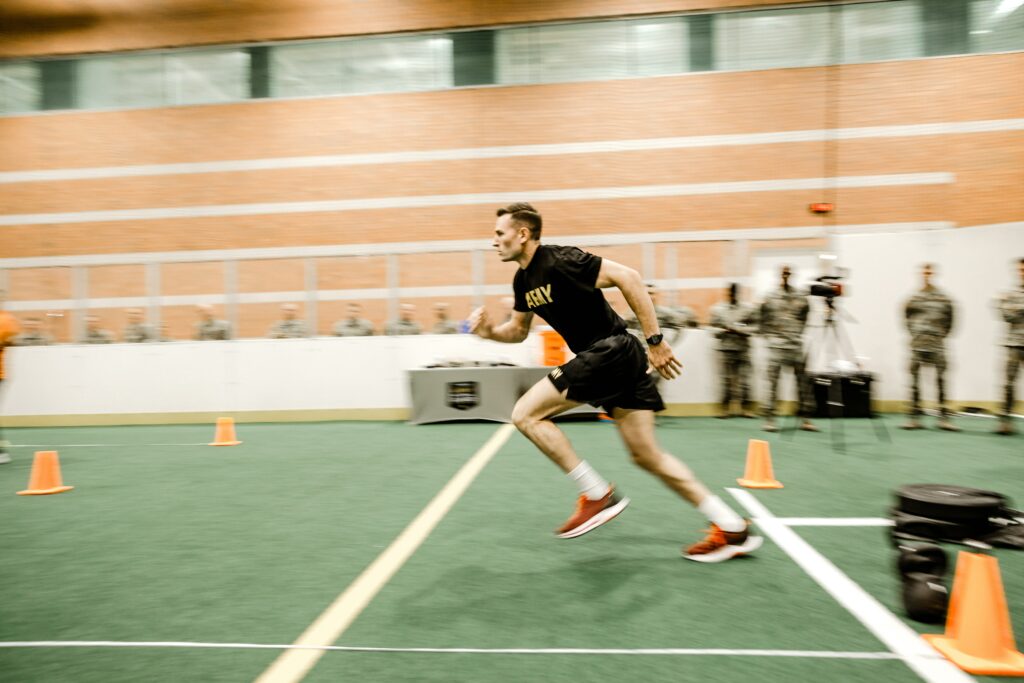
Twenty-six years ago today, I graduated from basic training in Fort Benning, Georgia. One of the greatest opportunities I’ve been afforded in my life was to serve my country in the Army National Guard. And I’m reminded of this every April 26th.
To this day, I’m still receiving the benefits of having served in the military, and this goes well beyond eating for free at restaurants every Veterans Day.
Before joining the military and attending basic training, purposeful, structured exercise was not on my radar. In fact, ironically, Phys Ed was the only class I ever failed. (In my defense, standing in the outfield with fifteen other people or getting crosschecked into gymnasium bleachers while playing floor hockey is a far cry from “education.”)
But it was in basic training that I was not only introduced to purposeful, structured exercise but immersed in it.
Here are nine things I learned from my experience. And although you may never have had the opportunity to experience basic training (a “boot camp” class doesn’t count), here are some things to be learned from my experience.
When I went into basic training, I was skinny and weak. I had no specific outcome goal. I had no thoughts of putting on muscle. I didn’t think about getting stronger. I simply showed up (did I have a choice?) and did the work. What happened? In four months, I put on 10 pounds of body weight. I went from being skinny and weak to leaner and stronger.
Although I was skinny, several guys were overweight. They were right next to me in the same formation, performing the same exercises, running the same miles. And you know what happened to them? They lost weight. They got leaner and stronger.
I remember taking my first Army Physical Fitness Test. The drill sergeant who scored my sit-ups (and had an uncanny resemblance to Samuel L. Jackson and was equally profane) said to me, “As skinny as you are, you should be able to destroy this.” I needed 52 to pass. I did 24. My abs had shape. You could see them. But they weren’t very fit.
Body composition (look) is one of just three things a sound fitness program should address. (The other two are health [feel] and performance [move]). Just because someone’s thin doesn’t mean they’re fit. And just because you can’t see someone’s abs doesn’t mean they’re not.
So, my sit-ups were abysmal. How about my push-ups? What’s worse than abysmal? That’s what my push-ups were. And my two-mile run? Well, I was the fastest guy in my company of some 120 soldiers. The fastest. I didn’t run cross-country in high school. I didn’t run track. I didn’t run.
When it comes to health, fitness, and body composition, we often play the comparison game. Someone with a slight build wants to be slightly bigger. Someone who’s slightly bigger wants to be smaller. I’m in no way suggesting either settle, but why not play to strengths, not “weaknesses”. And often, playing to strengths will strengthen weaknesses.
My body type and genetics may not lend themselves to being the strongest, but I can certainly get stronger. Your body type may not lend itself to being the leanest, but you can certainly be leaner. The grass is always greener . . . where you water it.
So, let’s review. Save scoring well on my two-mile run; I BOMBED my first APFT. But I knew what I had to improve.
“Adam, you already shared this one!” Yeah, but it’s that important. Just wanting a better score wouldn’t make it happen. I had to do something about it. I had to continue to do push-ups. I had to continue to do sit-ups. I had to DO. And what happened? I got better.
Call it competition. Call it commiseration. Whatever. Being around like-minded soldiers encouraged me to push myself more than I would’ve done on my own.
You may not consider a drill sergeant a coach, but I do. A coach is someone who instructs or trains. And they certainly did that. My workouts were planned. All I had to do was show up (again, did I have a choice?!). They took me through my workout. They “encouraged” me to push a little bit harder and to be a little better.
We had no gym. We had no Fitbits. And although we were in a platoon, we had no Peloton (which is French for “platoon”). We did what we could (calisthenics), where we were (outside), with what we had (our bodies). Don’t overthink your fitness program. Move well. Move often. (And if you don’t know how to, find a coach.)
The most important thing I learned was nothing beats consistency. Knowing what I know now, 26 years removed from basic training, there was a method to the madness.
Fitness experts espouse the importance of strength training, high-intensity interval training, and steady-state training. We did all of this. We did calisthenics, e.g., push-ups, sit-ups, squats, and lunges. We did HIIT, e.g., sprints. And we did steady-state training, e.g., longer, less intense runs. But we did something six days a week . . . for four months.
When did you last commit to a program for four months? How many workouts did you make (and subsequently miss) in the said program?
So, those are nine things I learned in basic training. Here’s what I gained.
As crazy as it may sound, there are days I wish I was back at basic training, but it’s not happening. What I can do, though, is apply some of what I learned in basic training to my current training. I can continue to get stronger. I can continue to gain confidence. And I can better serve others.
© 2025 28:Tenn Fitness ALL RIGHTS RESERVED
Website Proudly Designed by CGC